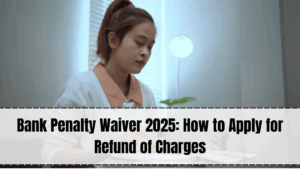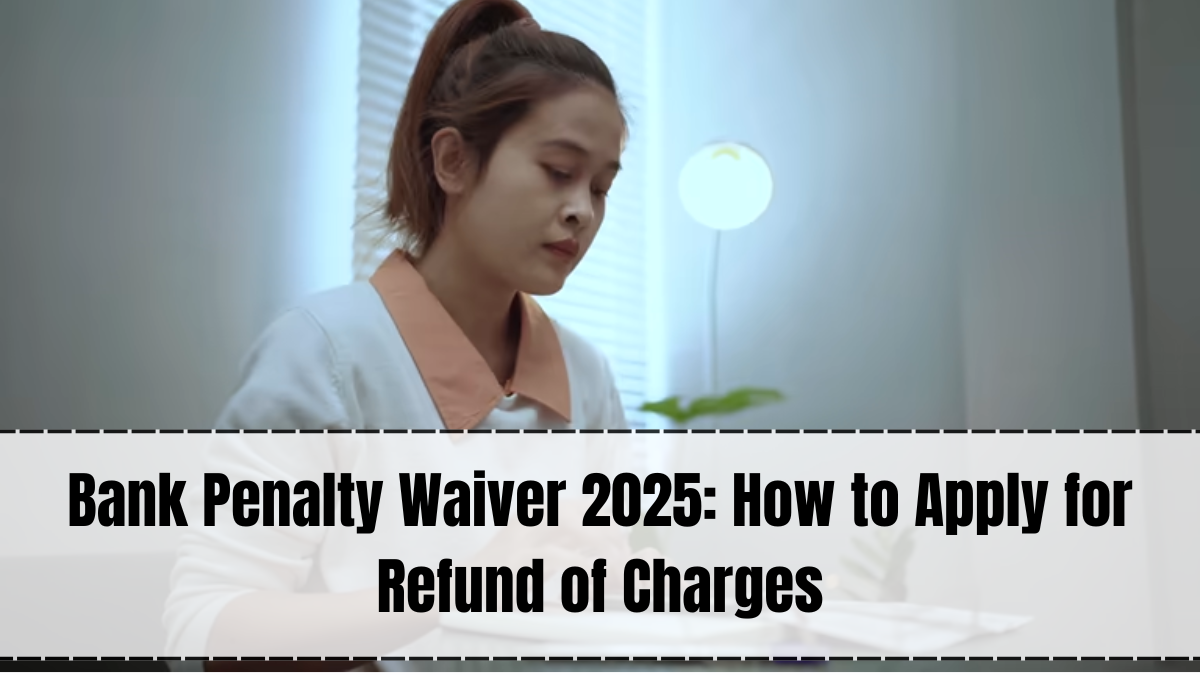Bank penalties for low balance, delayed EMI payments, or non-maintenance of account requirements can be frustrating. The good news is that in many cases, you can get these charges waived by following the right approach. In 2025, several banks have introduced more flexible penalty waiver policies for genuine customers. This guide explains the best bank penalty waiver tips so you can save money and maintain a good relationship with your bank.

Common Reasons for Bank Penalties
Before requesting a waiver, it’s important to understand why banks impose these charges. Some common penalties include:
-
Minimum balance shortfall – Not meeting the required monthly or quarterly balance.
-
Late EMI payments – Missing due dates for loans or credit cards.
-
Cheque bounce charges – Insufficient funds during cheque clearance.
-
Auto-debit failure fees – When ECS or NACH transactions fail.
-
ATM withdrawal limit breach – Exceeding the free withdrawal limit in a month.
Understanding the exact reason for the charge helps in making a strong case for waiver.
Steps to Get Bank Penalty Waived
Here’s a step-by-step approach to request and secure a penalty waiver:
1. Check the Penalty Type and Amount
Log in to your net banking or mobile app and review the penalty charge details. Note the date, amount, and reason.
2. Gather Proof or Justification
Banks are more likely to waive charges if you have a genuine reason such as:
-
Salary credited late
-
Medical emergency expenses
-
Technical error by the bank
-
Delay caused by public holidays
3. Contact the Bank Quickly
The sooner you raise the request, the higher your chances of success. Ideally, contact your bank within 3–5 days of the penalty being charged.
4. Use Multiple Communication Channels
If the first request fails, try:
-
Customer care helpline
-
Bank email support
-
Visiting the branch and speaking to the branch manager
5. Be Polite but Firm
Explain your situation clearly and request a one-time waiver. Mention your loyalty to the bank and your intent to maintain good standing.
Sample Penalty Waiver Request
Here’s a sample script you can use:
“I noticed a penalty charge of ₹[amount] on my account dated [date]. This was due to [reason]. I have been a loyal customer for [X years] and this is my first such instance. I kindly request a one-time waiver of this charge and assure you that I will maintain compliance in the future.”
Tips to Improve Waiver Approval Chances
-
Maintain a good average balance for at least 6 months.
-
Avoid repeated penalty instances.
-
Use the bank’s other services like FDs, credit cards, or insurance — loyal customers get more leniency.
-
Escalate to higher authorities if needed, but remain professional.
Penalty Waiver Policies in 2025
While each bank’s policy differs, in general:
-
Public sector banks often grant waivers for first-time offenders or genuine cases.
-
Private banks may require you to maintain the required balance for 1–2 months after the waiver.
-
Digital banks may allow instant penalty refunds through app requests.
Some banks even offer automatic reversal if the penalty is charged due to a bank error.
Long-Term Strategies to Avoid Penalties
While getting a waiver helps, prevention is better.
-
Switch to zero-balance accounts if maintaining high balance is difficult.
-
Set up SMS alerts for low balance.
-
Keep an emergency reserve in your account.
-
Track all auto-debit dates to avoid payment failures.
Why Banks Approve Waivers
Banks value customer relationships, and waiving a small penalty can help retain loyal customers. In most cases, the cost of losing a customer is higher than the penalty amount.
FAQs
Can I get a penalty waived more than once in a year?
Most banks allow only one or two waivers per year, especially for the same type of penalty.
Do I need to submit documents for a waiver request?
Not always. For small penalties, a simple explanation may be enough. For larger charges, proof like hospital bills or salary slips may help.
Will the waiver reflect instantly in my account?
Some banks process waivers within 24 hours, while others may take 3–7 business days.
Can penalty waivers be requested through net banking?
Yes, some banks have online forms for penalty reversal requests.
Does a penalty affect my credit score?
No, bank penalties do not impact your credit score, but they may affect your overall relationship with the bank.
Click here to know more.
